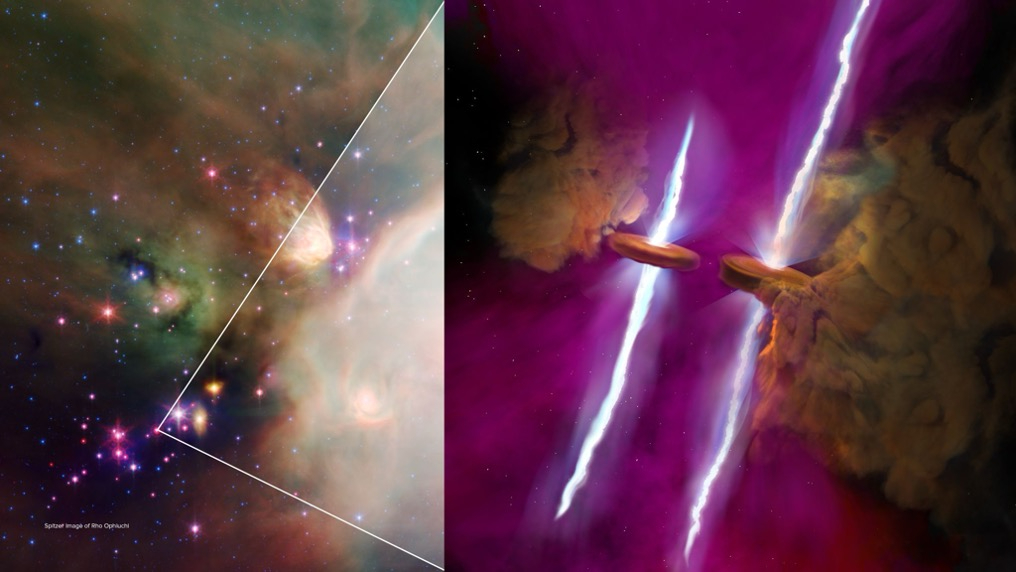
Shrouded in a dense cloud of gas and dust, a young star in the constellation Ophiuchus that astronomers have studied for decades has been found to be a duo. It would also appear that both members of the pair are encircled by a disk of material within which planets may have just begun coalescing.
The twin stars, which reside about 400 light-years from Earth in the WL 20 group, are less than a million years old and appear to have pushed away the billowy orange clouds within which they formed, suggesting their birth processes are nearing completion. That means astronomers can observe the stars as they transition into adulthood.
For decades, telescope observations showed the WL 20 group, which lies within a massive molecular cloud called Rho Ophiuchi, hosts three stars spread out like points of a triangle. Although they were born in the same pocket of gas and dust, two stars were roughly two million years old. The third star — the faintest among the group perched at the southern tip of the triangle — appeared to be younger than a million years.
"How could this be?" Mary Barsony, an independent astronomer who led the discovery, said on Wednesday (June 12) while presenting the discovery at the 244th meeting of the American Astronomical Society in Wisconsin. Many astronomers, including Barsony, have studied the triplets in WL 20 and their cosmic home Rho Ophiuchi for decades. "We thought we knew it pretty well," she said in a statement provided by NASA.
Related: 'Supernova discovery machine' James Webb Space Telescope finds most distant star explosion on record
Yet, when the James Webb Space Telescope observed the region, its powerful Mid-Infrared Instrument (MIRI) found the third star, called WL 20S, to be in fact a pair of twins itself — each member of the pair with matching jets streaming into space from its north and south poles. Additional observations by ALMA (short for Atacama Large Millimeter/submillimeter Array), a large network of 60 radio antennas in Chile that work as a giant telescope, revealed each of the twin stars were also surrounded by a disk of gas and dust. If one of the twin stars were to replace our sun, its disk would extend beyond Saturn's orbit, said Barsony.

"We were absolutely stunned when we first saw these images," she told reporters during a press briefing. Without MIRI, astronomers wouldn't have known about the twin star or the jets, she added. "It's like having brand new eyes."

Astronomers don't fully understand how multiple star systems such as the one involving four stars in WL 20 form. So, future observations of the quadruplets could shed more light on the underlying processes.
"It's amazing that this region still has so much to teach us about the life cycle of stars," said study co-author Mike Ressler, who is a project scientist for MIRI at NASA's Jet Propulsion Laboratory and has been studying the WL 20 group for nearly 30 years.
When Ressler was awarded some observing time with JWST, he chose to point the telescope toward WL 20, which was in the opposite part of the sky than his other targets.
"I thought, 'why not sneak it in? I'll never get another chance, even if it doesn't quite fit with the others,' said Ressler. "We had a very fortunate accident with what we found; the results are stunning."







